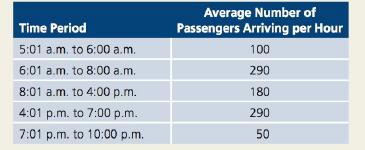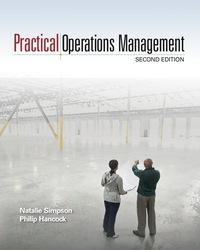The US Transportation Security Administration (TSA) operates six checkpoints for screening departing passengers at the Buffalo/Niagara International
Question:
The US Transportation Security Administration (TSA) operates six checkpoints for screening departing passengers at the Buffalo/Niagara International Airport. Each checkpoint consists of a baggage conveyor belt, CTX scanning/imaging machine, and a walk-through metal detector for passengers, although all six checkpoints are not necessarily operating all the time. This is because each checkpoint requires a team of three TSA employees to staff it, and there is not always a need to have six checkpoints running simultaneously. Passengers arriving at the airport are first met by a greeter who directs each passenger to one particular checkpoint that is in operation at that moment. Once greeted, each passenger then joins his assigned checkpoint's single line to be screened, and it takes an average of 1 minute to actu- ally screen each passenger through the checkpoint. The greeter's job is to divide the arriving passengers evenly between the checkpoints in operation, although the rate at which passengers arrive at the airport and approach the greeter does vary with the time of day:
TSA must maintain enough checkpoints such that the average delay experienced at checkpoint screening is less than 10 minutes. This delay includes both the time the passenger might wait to be screened and the time being screened.
a. Recommend the number of checkpoints that TSA should operate during the vari- ous time intervals of the day described in the table above, keeping in mind that TSA would prefer to minimize the staffing required.
b. Based on your recommendations, what is the average length of the line in front of each checkpoint throughout the day? During what time of day is a passenger least likely to have to wait to be screened after talking to the greeter?
Step by Step Answer:






